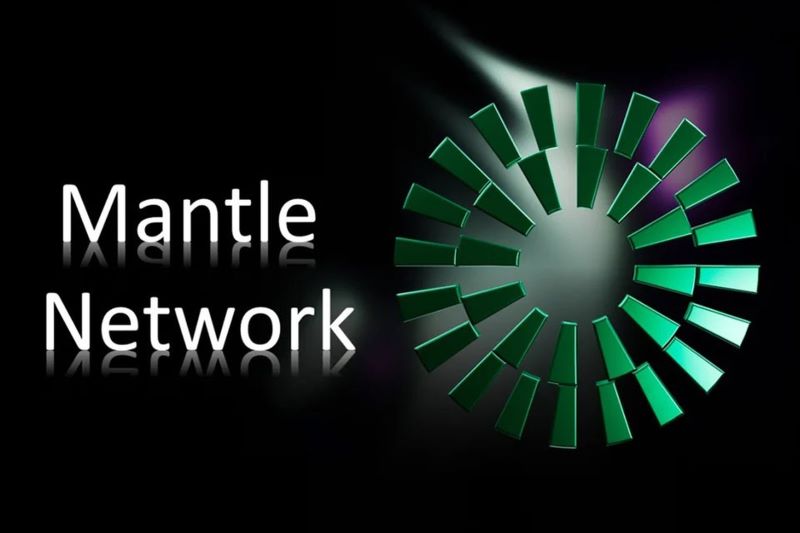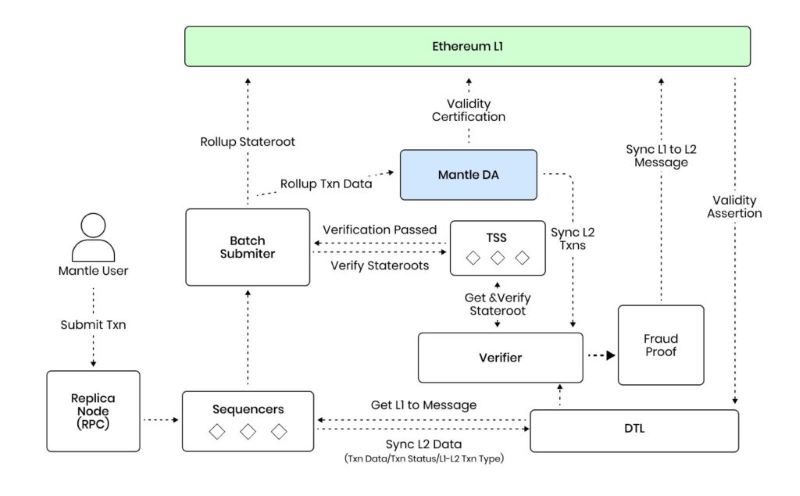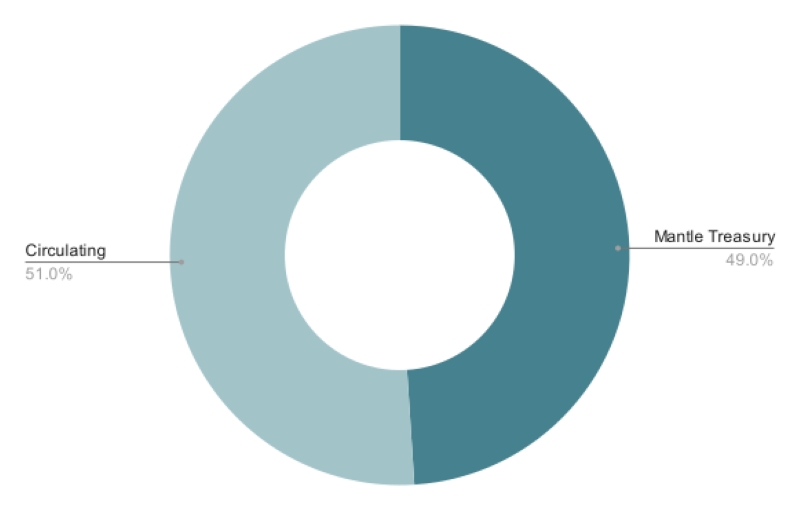Mantle is an innovative blockchain project that originated from BitDAO, one of the largest decentralized autonomous organizations (DAOs) supported by the Bybit exchange. Building on the legacy of BitDAO, Mantle introduces Mantle Network, a cutting-edge Layer 2 solution that provides scalable infrastructure for decentralized applications (dApps) running on Ethereum.
What Exactly is Mantle Network?

Mantle Network is a Layer 2 scaling solution built on Ethereum that uses Optimistic Rollups to enhance Ethereum’s capabilities. By leveraging this technology, Mantle is able to maintain Ethereum’s security, improve transaction scalability, and reduce costs for users. In essence, Mantle can be seen as a modular technology stack that allows Ethereum to function more efficiently.
One of the standout features of Mantle Network is its integration with EigenDA from EigenLayer, which significantly lowers data storage costs while ensuring high performance.
The Modular Architecture of Mantle Network
Mantle’s modular architecture brings several key improvements:
- It reduces the high fees that Layer 2 users face when Optimistic Rollups post transaction data on Ethereum.
- The architecture allows for greater transaction throughput, which is limited in traditional Layer 2 solutions that rely on Ethereum’s data availability layer.
- Mantle eliminates the lengthy withdrawal delays common in Optimistic Rollups, where users must wait up to 7 days to retrieve their assets.
By introducing Mantle DA as a dedicated data availability layer, service providers can stake MNT tokens to participate in the network’s economy. This model ensures data reliability and security while leveraging Ethereum’s foundational security features.
Unique Offerings from Mantle Network

Mantle Network isn’t just another Layer 2 scaling solution—it also provides Liquid Staking Derivatives. This means users can stake ETH on Ethereum through Mantle and receive mntETH, which they can use within Mantle’s ecosystem. Stakers can also earn rewards like MEV (Miner Extractable Value) and network fees, making it a lucrative opportunity for participants.
Mantle’s Layer 2 Design
Mantle Network’s design focuses on modularity. In its early mainnet phase, it operates as a Smart Contract Rollup with modular data availability, allowing for efficient processing of transactions and state updates.
Here’s how it works:
- Execution Layer: A smart contract environment compatible with EVM (Ethereum Virtual Machine) where transactions occur.
- Consensus & Settlement: Occur on Ethereum’s Layer 1.
- Data Availability: Handled by Mantle DA, which uses EigenDA in collaboration with EigenLayer to store and manage data.
Mantle DA’s structure includes key participants:
- Operators: Validate and sign off on data blocks, staking assets to secure the network.
- Dispersers: Users who pay for data availability guarantees, ensuring data distribution and integrity.
- Challengers: Enforce the protocol by challenging invalid data or misbehaving operators.
- Smart Contracts: Run on Ethereum, ensuring that only valid data is accepted and managing the protocol’s custody mechanisms.
How Mantle Network Operates
Mantle Network processes user transactions through a highly efficient flow. When a user submits a transaction, it is processed by the Sequencer, which groups transactions into blocks. These blocks are synchronized and verified by Mantle’s Data Transport Layer (DTL) and published on Ethereum’s Layer 1.
The network uses Threshold Signature Scheme (TSS) nodes to validate and sign transaction batches, ensuring their integrity. Meanwhile, Rollup Verifiers monitor the validity of these transactions and the associated data, raising challenges if fraudulent behavior is detected.
Mantle Network also uses DA Nodes to store transaction data, ensuring it’s available for retrieval and verification at any time.
Key Features of Mantle Network
- Security by Ethereum: All Layer 2 state changes are validated and secured by Ethereum’s validators.
- Developer-Friendly Environment: Mantle supports popular development tools like Truffle, Hardhat, and Solidity, making it accessible for developers.
- Lower Gas Fees: Thanks to its modular data availability and compression techniques, Mantle reduces gas fees by more than 80%.
- High Throughput & Low Latency: Mantle processes transactions at up to 500 TPS (transactions per second), with customizable confirmation times that can be as low as 10 milliseconds, significantly faster than Ethereum’s 12 seconds.
The Future of Mantle Network
In a major development for the cryptocurrency world, BitDAO, backed by Bybit, officially merged with Mantle in May 2024, following the approval of the BIP 21 proposal. This strategic move combines BitDAO’s financial governance with Mantle’s technical expertise, aiming to create a unified blockchain ecosystem.

The merger provides Mantle with access to over $300 million in stablecoins and 270,000 ETH (approximately $485 million), providing ample financial resources for Mantle’s future growth and development.
Tokenomics & Governance
Mantle Network’s native token, MNT, plays a crucial role in the network:
- It serves as the governance token, allowing holders to vote on network decisions.
- It is used to pay for transaction fees and serves as collateral for node operators.
With a total supply of 6.2 billion tokens, MNT is distributed through DAO governance without a vesting schedule, ensuring fair usage across the ecosystem.
Mantle Network’s innovative modular architecture and focus on scalability, security, and efficiency make it a powerful contender in the blockchain space. As the Layer 2 landscape evolves, Mantle’s ability to leverage Ethereum’s security while improving transaction costs and throughput positions it to succeed in the rapidly growing decentralized finance (DeFi) ecosystem.

